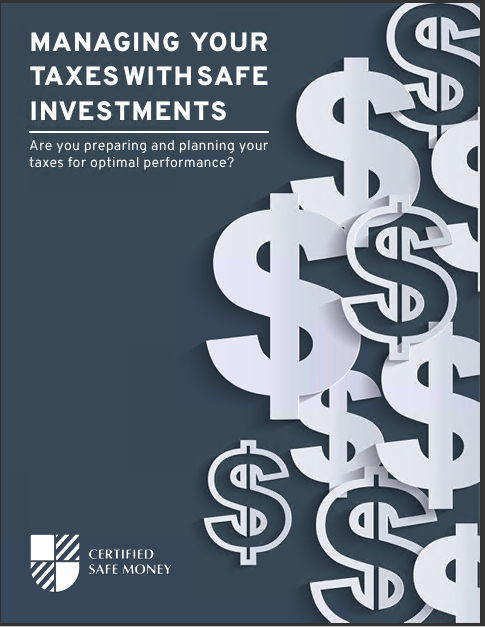Life Insurance Myths and Mistakes
Life insurance can be a crucial component in nearly any financial plan. But this is only true if it is purchased for the right reason(s) and with the proper amount of death benefit. Because life insurance is often misunderstood, many myths surround this financial vehicle.Not fully comprehending what you’re buying and how it works can lead to a future financial struggle for your loved ones and survivors. So, you need to dispel these life insurance myths before committing to purchasing a policy.
How is Life Insurance Supposed to Work?
While you may already be aware that life insurance pays out a death benefit if the insured dies, there is a plethora of other ways that this flexible financial tool can work – and in some cases, the insured doesn’t have to pass away.To narrow down which type of life insurance is right for you, if any, it is recommended that you first know the ways coverage can be purchased, as well as be familiar with the features included on the policy and whether or not you will qualify for a plan.There are two main categories of life insurance. These are term and permanent. Within each of these categories, though, there are many policy variations. So, while one particular type of life insurance may be an ideal fit for some people, it might not be right for others. Going over all of your options with advisors can help you decide which option is best for you and your specific needs.Term Life InsuranceTerm life insurance remains in force for a preset period of time, or “term.” Some term insurance policies are short, such as one-year renewable term. Others are much longer, such as 20 or 30 years of coverage. There is only death benefit protection with term life insurance, and there is no cash value or investment component.Because term life is considered “plain vanilla” protection, it is often cheaper than purchasing permanent life insurance with a comparable amount of death benefit protection. Given the specific time period with term life insurance, this type of coverage is often used for short-term needs, such as the payoff of a 30-year mortgage balance or funding a child’s college education.
Permanent Life InsurancePermanent life insurance offers death benefit protection and a cash value component. This protection can last throughout the insured’s entire lifetime as long as the premium is paid. This means that even if the insured contracts an adverse health condition, the policy will continue.The funds in the cash value component of a permanent life insurance policy grow on a tax-deferred basis. This means that there is no tax due on the growth unless or until the money is accessed.There are several different types of permanent life insurance, including:
- Whole Life Insurance
- Universal Life Insurance
- Variable Life Insurance
- Variable Universal Life Insurance
- Indexed Universal Life Insurance
While some types of permanent life insurance offer a set rate of return and safety of principal, others have the opportunity to generate market-like returns. However, these plans may also subject your funds to the risk of loss.
Life Insurance Myths
Many people believe that life insurance is only for those who have young children or others depending on them for financial support. But this is not always the case. This type of misinformation can lead to an inadequate amount of coverage being purchased which, in turn, could result in future financial hardship for those you love.With that in mind, some of the top life insurance myths include the following:Life insurance is only right for people who have a spouse or young children depending on them for income.Although life insurance is often purchased by spouses and parents who have dependents, this doesn’t mean that coverage is only for these individuals. For instance, single people should also consider purchasing life insurance so that personal debts can be paid, as well as any uninsured medical bills and final expenses (such as a funeral, burial plot, headstone, transportation, memorial service, and flowers).Today, the average cost of a funeral is in the range of $8,000 to $10,000 – especially when factoring in the price of a casket, burial plot, and headstone, as well as a memorial service, flowers, and transportation.Retirees should also have life insurance in place. If, for example, one spouse dies, his or her Social Security or pension income could disappear. This, in turn, can significantly impact the surviving spouse’s income and lifestyle.Life insurance can be converted into an income stream that could replace some of the incoming cash flow lost upon the first spouse’s death. The proceeds from a life insurance policy may also be used to pay the remaining balance on a mortgage or car loan, as well as for final expenses.Another way life insurance can be used is for charitable donations. If you have a favorite organization, you can leverage your gifts by naming the charity as your policy beneficiary. The charity can also receive the proceeds tax-free.The best way to own life insurance is to “buy term and invest the difference.”Some life insurance agents believe that the best plan is to buy term life insurance – taking advantage of its lower premium – and then invest the difference in mutual funds or other financial vehicles.This, however, is not necessarily the best independent financial advice. One reason is while term life insurance could provide you with a high death benefit in return for a lower premium (compared to a comparable permanent policy), many people do not “invest the difference.” (And even if they do, the gains in most investments that are held in non-qualified accounts are taxable each year, in turn reducing the overall return on the funds.)In addition, term life insurance will expire after the coverage period has elapsed. If this is the case, the insured may need to requalify at his or her then-current age and health condition (which usually results in a higher premium going forward).On the other hand, purchasing a permanent life insurance policy can provide several benefits, such as coverage that will not expire (as long as the premium is paid). The funds in the cash value grow tax-deferred, so there is no tax due to the gain unless or until it is withdrawn.Once you have retired, you can cancel your life insurance coverage.When you leave the world of employment, your life insurance needs can continue. That’s why retirees should have coverage that may be used for paying final expenses, estate taxes, debt payoff, or lifetime income.Another reason for retirees to carry life insurance is in the case of a long-term care need. In this instance, if one spouse requires care, the cost could significantly deplete assets. In turn, this could leave very little in the portfolio for the surviving spouse. But the proceeds from a life insurance policy may provide replacement of those lost funds.Group life insurance through your employer’s benefits package is usually enough to cover all your needs.Although group life insurance can provide you with financial protection for a low (or no) premium, this coverage is often not enough to support the needs of your survivors. In addition, if you leave your current employer, the coverage may not be “portable.” (This means you cannot take it with you.) With that in mind, having one or more personal life insurance policies may be recommended.Pre-existing health conditions will prevent you from obtaining life insurance coverage.In some cases, pre-existing health conditions could preclude you from getting life insurance. But it doesn’t necessarily have to. Guaranteed issue life insurance policies can be purchased with no health qualifications.These policies are designed for those who have adverse health conditions, such as high blood pressure and heart disease. As long as the premium is paid, guaranteed issue life insurance will remain in force. In addition, because there is no underwriting on these policies, the coverage can usually be issued much more quickly than a fully-underwritten life insurance plan.Depending on the policy, coverage may need to be in force for a certain period of time – such as two years – for the full death benefit to be paid to the beneficiary. Otherwise, if the insured dies sooner than that, the beneficiary may only receive a percentage of the death benefit or just a return of the premium.Only the primary income earner in a family or household needs life insurance.While it is essential to ensure that income is replaced if the primary breadwinner dies, they are not the only ones in a household that should be covered. For example, a stay-at-home mom should also typically have coverage – even if she does not bring in an income.This is because it could be extremely costly to hire someone to take over her duties if she passes away. In this case, the survivors may have to bring a cook, housekeeper, or childcare professional on board.The only way to benefit from life insurance is if someone dies.Even though many people financial planning for retirement purchase life insurance for the death benefit that it can provide in the future, this is not the only way to use these financial vehicles. For instance, permanent life insurance offers tax-deferred growth in the cash value.Therefore, a whole, universal, or variable life insurance policy could provide you with an additional avenue of tax-advantaged growth, even if you have “maxed out” the annual contributions to an IRA or employer-sponsored retirement savings plan.There are other ways to benefit from life insurance, too. As an example, the funds in a permanent policy’s cash value can be borrowed tax-free. This means that you’ll be able to use 100% of the money that you access.Plus, while you may pay the loan back (with interest), any unpaid balance remaining at the time of the insured’s death will be taken from the death benefit – with the remainder of the proceeds (if any) paid income tax-free to the beneficiary. Many retirees use this strategy as a way to supplement guaranteed retirement income on a tax-free basis.
Top Mistakes When Buying Life Insurance
Before you buy any type of “big ticket” item, it is essential to understand how it works, how much it costs, and what you can do if it turns out to be the wrong option.Some of the biggest mistakes made when purchasing life insurance can include:
- Not researching the coverage and cost of several policy options
- Not checking the financial strength ratings and claims-paying reputation on the offering insurance company
- Not getting enough coverage for your survivors’ financial needs
- Buying the “wrong” type of coverage (such as purchasing term insurance forestate planning needs)
- Not taking the surrender charge period into consideration
- Not comparing the premium on similar policies sold through different insurance carriers
- Not reviewing your coverage regularly – particularly if a major life change has taken place
Which Life Insurance Policy is Right for You?There are many different life insurance types, so coverage can be more “customized” to meet certain needs. With a financial safety net, you can be sure that your loved ones and survivors will be able to move forward in the event of the unthinkable.Even if you already have life insurance, your coverage needs can change if you endure any major changes in your life, such as marriage or divorce, the death of a spouse, retirement, or the purchase or sale of a business.Before you make a long-term commitment to a life insurance policy, you should discuss your short- and long-term objectives with a retirement financial advisor who is well-versed in protection planning.To talk with a life insurance specialist who can help you narrow down the right plan for you – based on your needs and budget – feel free to contact us directly at info@certifiedsafemoney.com. We look forward to providing you with peace of mind for both today and tomorrow.













